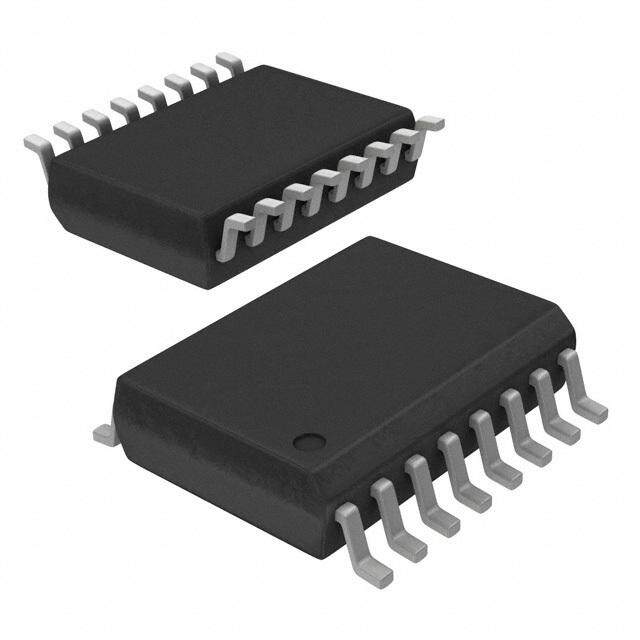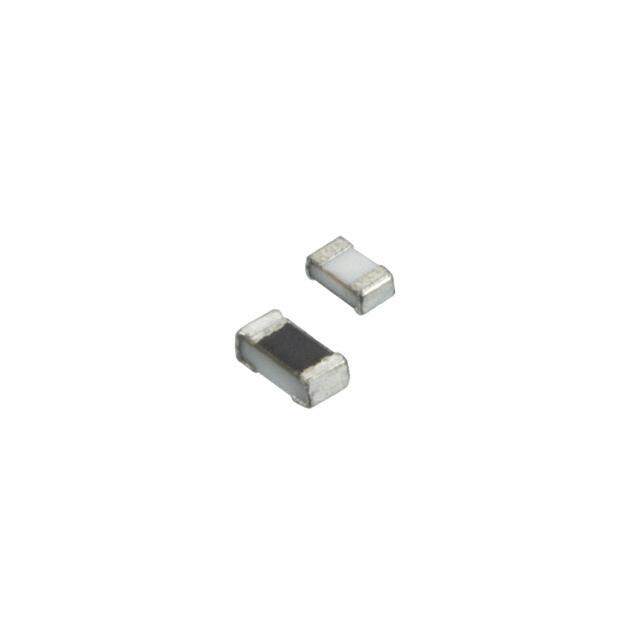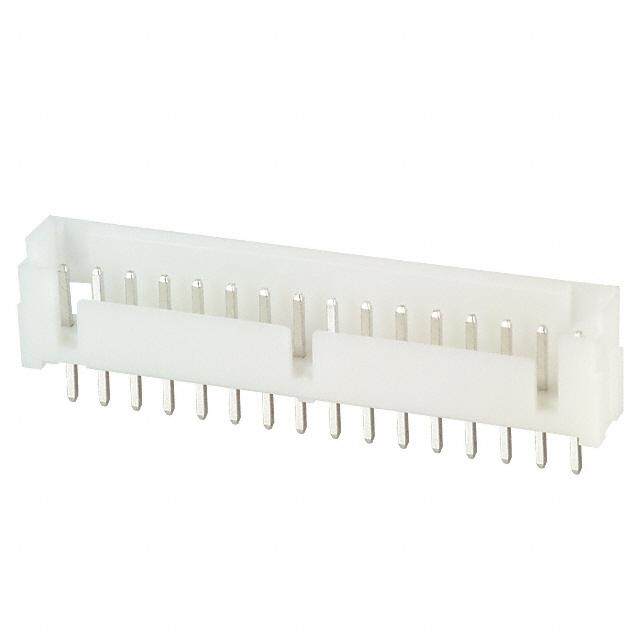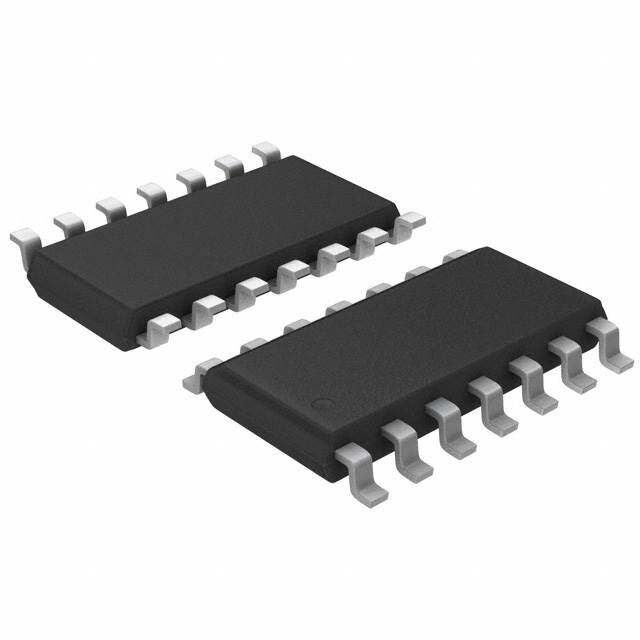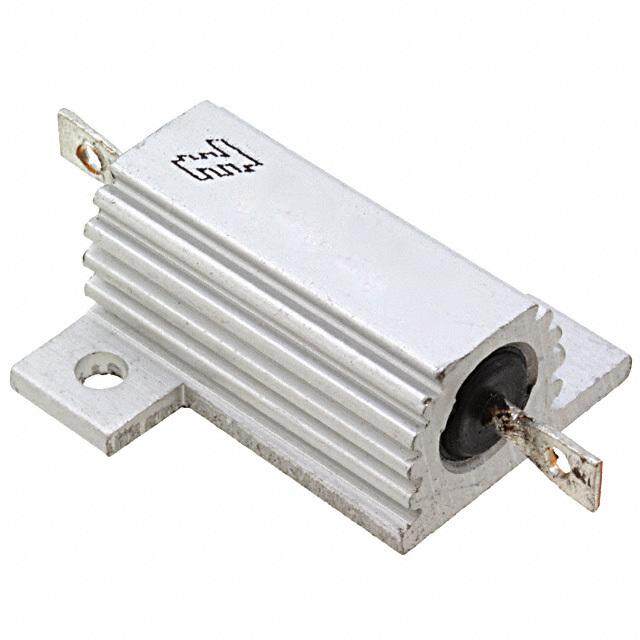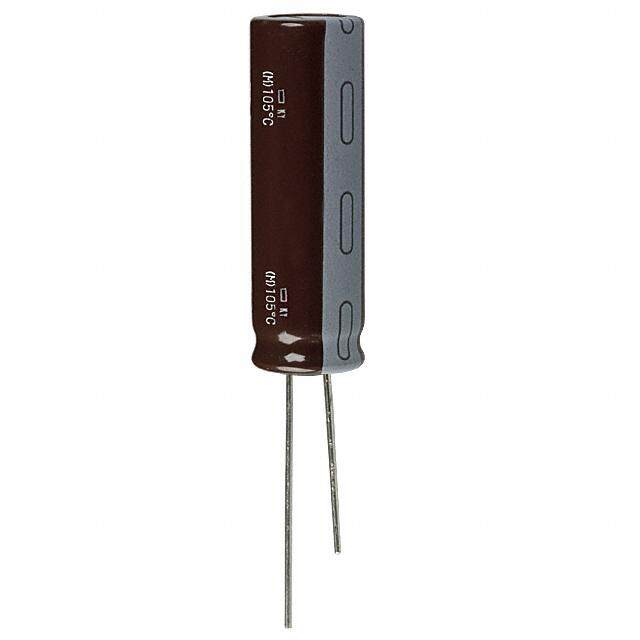ICGOO在线商城 > MIC4724YMME
- 型号: MIC4724YMME
- 制造商: Micrel
- 库位|库存: xxxx|xxxx
- 要求:
| 数量阶梯 | 香港交货 | 国内含税 |
| +xxxx | $xxxx | ¥xxxx |
查看当月历史价格
查看今年历史价格
MIC4724YMME产品简介:
ICGOO电子元器件商城为您提供MIC4724YMME由Micrel设计生产,在icgoo商城现货销售,并且可以通过原厂、代理商等渠道进行代购。 提供MIC4724YMME价格参考以及MicrelMIC4724YMME封装/规格参数等产品信息。 你可以下载MIC4724YMME参考资料、Datasheet数据手册功能说明书, 资料中有MIC4724YMME详细功能的应用电路图电压和使用方法及教程。
| 参数 | 数值 |
| 产品目录 | 集成电路 (IC)半导体 |
| 描述 | IC REG BUCK ADJ 3A 10MSOP稳压器—开关式稳压器 3A 2MHz Buck Regulator in Epad MSOP-10 |
| 产品分类 | |
| 品牌 | Micrel |
| 产品手册 | |
| 产品图片 |
|
| rohs | 符合RoHS无铅 / 符合限制有害物质指令(RoHS)规范要求 |
| 产品系列 | 电源管理 IC,稳压器—开关式稳压器,Micrel MIC4724YMME- |
| 数据手册 | |
| 产品型号 | MIC4724YMME |
| PWM类型 | - |
| 产品目录页面 | |
| 产品种类 | 稳压器—开关式稳压器 |
| 供应商器件封装 | 10-MSOP-EP |
| 其它名称 | 576-3120-5 |
| 包装 | 管件 |
| 同步整流器 | 无 |
| 商标 | Micrel |
| 安装类型 | 表面贴装 |
| 安装风格 | SMD/SMT |
| 封装 | Tube |
| 封装/外壳 | 10-TFSOP,10-MSOP(0.118",3.00mm 宽)裸焊盘 |
| 封装/箱体 | MSOP-10 |
| 工作温度 | -40°C ~ 125°C |
| 工厂包装数量 | 100 |
| 开关频率 | 2 MHz |
| 拓扑结构 | Buck |
| 最大工作温度 | + 125 C |
| 最大输入电压 | 6 V |
| 最小工作温度 | - 40 C |
| 最小输入电压 | 3 V |
| 标准包装 | 100 |
| 电压-输入 | 3 V ~ 6 V |
| 电压-输出 | 可调至 1V |
| 电流-输出 | 3A |
| 电源电流 | 570 uA |
| 类型 | PWM Buck Regulators |
| 系列 | MIC4724 |
| 负载调节 | 0.2 % |
| 输出数 | 1 |
| 输出电压 | Adj |
| 输出电流 | 3 A |
| 输出端数量 | 1 Output |
| 输出类型 | 可调式 |
| 频率-开关 | 2MHz |
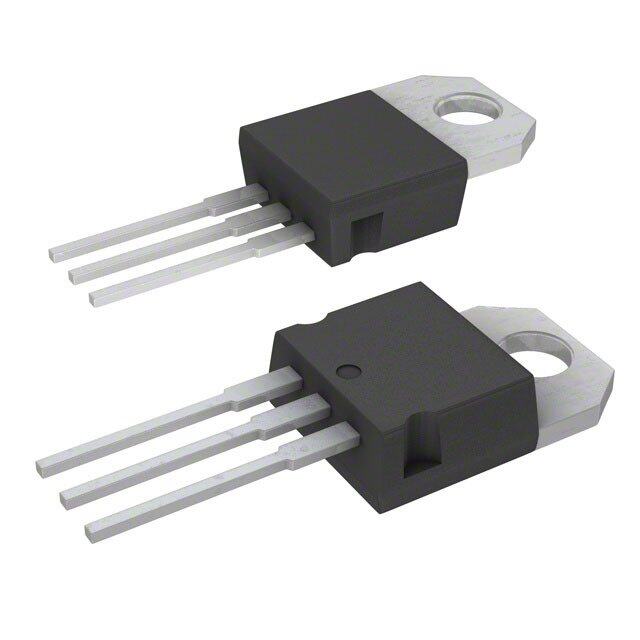

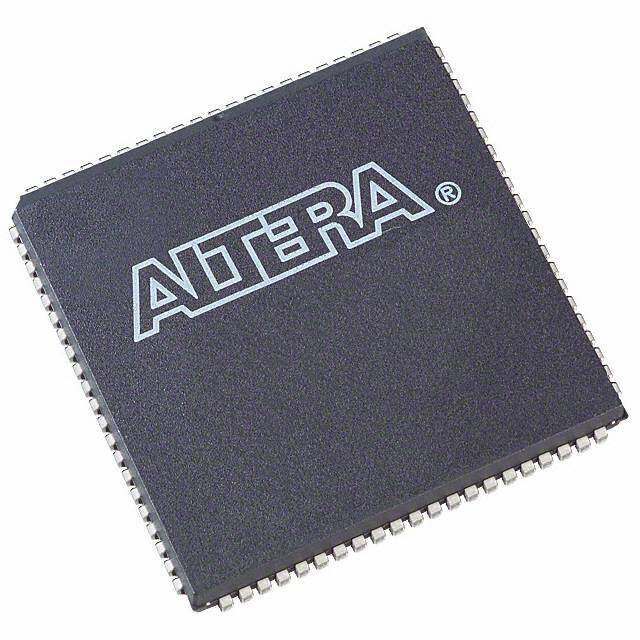

.jpg)
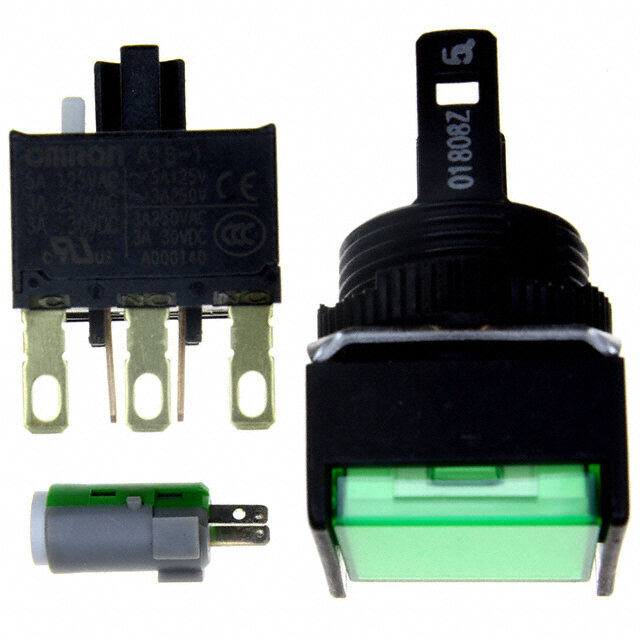
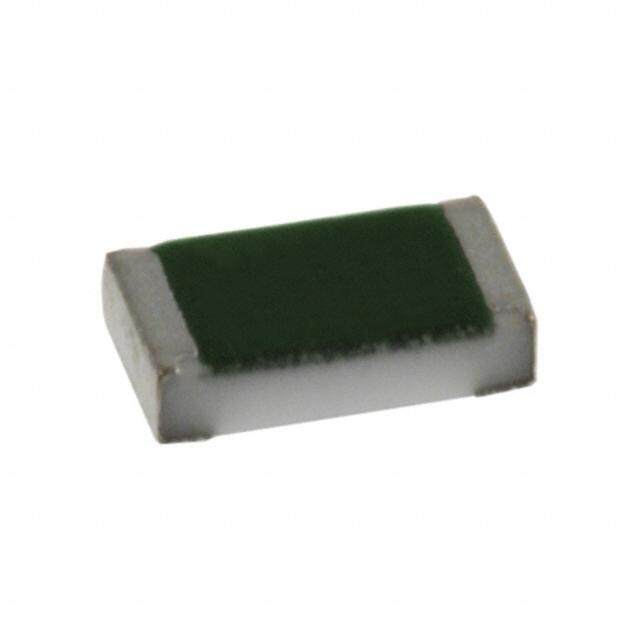
PDF Datasheet 数据手册内容提取
MIC4724 3A 2MHz Integrated Switch Buck Regulator with 6Vmax Input General Description Features The Micrel MIC4724 is a high efficiency PWM buck (step- • 3.0 to 6.0V supply voltage down) regulator that provides up to 3A of output current. • 2.0MHz PWM mode The MIC4724 operates at 2.0MHz and has proprietary • Output current to 3A internal compensation that allows a closed loop bandwidth • Up to 94% efficiency of over 200KHz. • 100% maximum duty cycle The low on-resistance internal p-channel MOSFET of the • Adjustable output voltage option down to 1V MIC4724 allows efficiencies over 92%, reduces external • Ultra-fast transient response components count and eliminates the need for an • Ultra-small external components expensive current sense resistor. Stable with a 1µH inductor and a 4.7µF output The MIC4724 operates from 3.0V to 6.0V input and the capacitor output can be adjusted down to 1V. The devices can • Fully integrated 3A MOSFET switch operate with a maximum duty cycle of 100% for use in low- • Micropower shutdown dropout conditions. • Thermal shutdown and current limit protection The MIC4724 is available in 10-pin ePAD MSOP package • Pb-free 10-pin ePAD MSOP package with a junction operating range from –40°C to +125°C. • –40°C to +125°C junction temperature range Data sheets and support documentation can be found on Applications Micrel’s web site at: www.micrel.com. • FPGA/DSP/ASIC applications • General point of load • Broadband communications • DVD/TV recorders • Point of sale • Printers/Scanners • Set top boxes • Computing peripherals • Video cards ___________________________________________________________________________________________________________ Typical Application 3.3VOUT Efficiency 96 4.5VIN 94 5VIN 92 90 5.5VIN 88 86 84 82 80 78 3A 2MHz Buck Regulator 76 0 0.5 1 1.5 2 2.5 3 OUTPUT CURRENT (A) MLF and MicroLeadFrame are registered trademarks of Amkor Technology, Inc. Micrel Inc. • 2180 Fortune Drive • San Jose, CA 95131 • USA • tel +1 (408) 944-0800 • fax + 1 (408) 474-1000 • http://www.micrel.com June 2008 M9999-062408-A
Micrel, Inc. MIC4724 Ordering Information Part Number Voltage Temperature Range Package Lead Finish MIC4724YMME Adj. –40° to +125°C 10-Pin ePAD MSOP Pb-Free Note This is a GREEN RoHS compliant package. Lead finish is NiPdAu. Mold compound is Halogen Free. Pin Configuration SW 1 10 SW VIN 2 9 VIN SGND 3 8 PGND BIAS 4 7 PGOOD EP FB 5 6 EN 10-Pin ePAD MSOP (MME) Pin Description Pin Pin Pin Function Number Name 1, 10 SW Switch (Output): Internal power P-Channel MOSFET output switch. 2, 9 VIN Supply Voltage (Input): Supply voltage for the source of the internal P-channel MOSFET and driver. Requires bypass capacitor to GND. 8 PGND Power Ground. Provides the ground return path for the high-side drive current. 3 SGND Signal (Analog) Ground. Provides return path for control circuitry and internal reference. 4 BIAS Internal circuit bias supply. Must be bypassed with a 0.1µF ceramic capacitor to SGND. 5 FB Feedback. Input to the error amplifier, connect to the external resistor divider network to set the output voltage. 6 EN Enable (Input). Logic level low, will shutdown the device, reducing the current draw to less than 5µA. 7 PGOOD Power Good. Open drain output that is pulled to ground when the output voltage is within ±7.5% of the set regulation voltage. EP ePAD Connect to ground. June 2008 2 M9999-062408-A
Micrel, Inc. MIC4724 Absolute Maximum Ratings(1) Operating Ratings(2) Supply Voltage (V )....................................................+6.5V Supply Voltage (V ).....................................+3.0V to +6.0V IN IN Output Switch Voltage (V ).......................................+6.5V Logic Input Voltage (V ).......................................0V to V SW EN IN Output Switch Current (I )............................................11A Junction Temperature (T )........................–40°C to +125°C SW J Logic Input Voltage (V )..................................–0.3V to V Junction Thermal Resistance EN IN Storage Temperature (T ).........................–60°C to +150°C (θ )...................................................................63°C/W s JA Electrical Characteristics(4) V = V = 3.6V; L = 1µH; C = 4.7µF; T = 25°C, unless noted. Bold values indicate –40°C< T < +125°C. IN EN OUT A J Parameter Condition Min Typ Max Units Supply Voltage Range 3.0 6.0 V Under-Voltage Lockout (turn-on) 2.45 2.55 2.65 V Threshold UVLO Hysteresis 100 mV Quiescent Current V = 0.9 * V (not switching) 570 900 µA FB NOM Shutdown Current V = 0V 2 15 µA EN [Adjustable] Feedback ± 2% (over temperature) I = 100mA 0.98 1.02 V LOAD Voltage FB pin input current 1 nA Current Limit in PWM Mode V = 0.9 * V 3.5 5 A FB NOM Output Voltage Line V > 2V; V = V +500mV to 6.0V; I = 100mA 0.07 % OUT IN OUT LOAD Regulation V < 2V; V = 2.7V to 6.0V; I = 100mA % OUT IN LOAD Output Voltage Load 20mA < I < 3A 0.2 % LOAD Regulation Maximum Duty Cycle V ≤ 0.4V 100 % FB PWM Switch ON- I = 50mA; V = GND (High Side Switch) 110 mΩ SW FB Resistance mΩ Oscillator Frequency 2 MHz Enable Threshold 0.5 0.85 1.3 V Enable Hysteresis 50 mV Enable Input Current 0.1 2.3 µA Power Good Range ±7 ±10 % Power Good Resistance I = 500µA 150 300 Ω PGOOD Over-Temperature 160 °C Shutdown Over-Temperature 25 °C Hysteresis Notes: 1. Exceeding the absolute maximum rating may damage the device. 2. It is recommended that a transient input voltage may not exceed operating rating of the device for more that 5% of the time and in no case should the transient voltage exceed the absolute maximum rating of the device. 3. Specification for packaged product only. June 2008 3 M9999-062408-A
Micrel, Inc. MIC4724 Typical Characteristics 1VOUT Efficiency 1VOUT Efficiency 1.2VOUT Efficiency 84 78 90 88 788802 3VIN 3.3VIN 7746 4.5VIN 5VIN 888246 3VIN 3.3VIN 72 80 76 78 74 3.6VIN 6780 5.5VIN 7746 3.6VIN 72 72 66 70 70 68 68 64 66 66 62 64 62 64 60 60 0 0.5 1 1.5 2 2.5 3 0 0.5 1 1.5 2 2.5 3 0 0.5 1 1.5 2 2.5 3 OUTPUT CURRENT (A) OUTPUT CURRENT (A) OUTPUT CURRENT (A) 1.2VOUT Efficiency 1.5VOUT Efficiency 1.5VOUT Efficiency 90 92 86 888468 889680 3VIN 3.3VIN 8824 4.5VIN 5VIN 77886802 4.5VIN 5VIN 888024 3.6VIN 778680 5.5VIN 78 777024 5.5VIN 7746 7724 68 72 70 66 70 68 64 68 62 66 66 60 64 64 0 0.5 1 1.5 2 2.5 3 0 0.5 1 1.5 2 2.5 3 0 0.5 1 1.5 2 2.5 3 OUTPUT CURRENT (A) OUTPUT CURRENT (A) OUTPUT CURRENT (A) 1.8VOUT Efficiency 1.8VOUT Efficiency 2.5VOUT Efficiency 96 90 100 9924 3VIN 8868 4.5VIN 5VIN 98 90 3.3VIN 84 96 3VIN 88 82 94 3.3VIN 8846 3.6VIN 7880 5.5VIN 92 82 76 80 74 90 3.6VIN 78 72 88 76 70 86 74 68 72 66 84 70 64 82 68 62 66 60 80 0 0.5 1 1.5 2 2.5 3 0 0.5 1 1.5 2 2.5 3 0 0.5 1 1.5 2 2.5 3 OUTPUT CURRENT (A) OUTPUT CURRENT (A) OUTPUT CURRENT (A) Load Regulation 2.5VOUT Efficiency 3.3VOUT Efficiency 94 96 1.010 4.5VIN 9902 4.5VIN 5VIN 999024 5.5VIN 5VIN AGE (V)1.005 88 88 T L 86 O1.000 86 5.5VIN 84 T V U 84 82 P T0.995 80 U 82 O 78 VIN = 33..33VV 800 0.5 1 1.5 2 2.5 3 760 0.5 1 1.5 2 2.5 3 0.9900 0.5 1 1.5 2 2.5 3 OUTPUT CURRENT (A) OUTPUT CURRENT (A) OUTPUT CURRENT (A) June 2008 4 M9999-062408-A
Micrel, Inc. MIC4724 Typical Characteristics (continue) Feedback Voltage Frequency Line Regulation vs. Temperature vs. Temperature 1.0010 1.010 2.5 1.0008 1.008 2.4 1.0006 1.006 2.3 1.0004 1.004 2.2 1.0002 1.002 2.1 1.0000 1.000 2.0 0.9998 0.998 1.9 0.9996 0.996 1.8 0.9994 0.994 1.7 0.9992 0.992 VIN = 3.3V 1.6 VIN = 3.3V 0.9990 0.990 1.5 2.7 3.2 3.7 4.2 4.7 5.2 20 40 60 80 20 40 60 80 SUPPLY VOLTAGE (V) TEMPERATURE (°C) TEMPERATURE (°C) Feedback Voltage Quiescent Current RDSON vs. Supply Voltage vs. Supply Voltage vs. Supply Voltage 1.2 800 120 700 115 1.0 110 600 105 0.8 500 100 0.6 400 95 300 90 0.4 85 200 80 0.2 VEN = VIN 100 VEN= VIN 75 0 0 70 0 1 2 3 4 5 0 1 2 3 4 5 6 2.7 3.2 3.7 4.2 4.7 5.2 SUPPLY VOLTAGE (V) SUPPLY VOLTAGE (V) SUPPLY VOLTAGE (V) RDSON Enable Threshold Enable Threshold vs. Temperature vs. Supply Voltage vs. Temperature 160 1.2 1.2 140 1.0 1.0 120 0.8 0.8 100 80 0.6 0.6 60 0.4 0.4 40 0.2 0.2 20 VIN = 3.3V VIN = 3.3V 0 0 0 20 40 60 80 2.7 3.2 3.7 4.2 4.7 20 40 60 80 TEMPERATURE (°C) SUPPLY VOLTAGE (V) TEMPERATURE (°C) Thermal De-Rating Curves 3.5 3 A) NT (2.5 VOUT = 3.3V RE 2 R V = 1.2V U1.5 OUT C D A 1 O L 0.5 V = 5.4V IN 0 0 20 40 60 80 100 120 AMBIENT TEMPERATURE (°C) June 2008 5 M9999-062408-A
Micrel, Inc. MIC4724 Functional Characteristics June 2008 6 M9999-062408-A
Micrel, Inc. MIC4724 Functional Diagram VIN VIN P-Channel Current Limit BIAS HSD SW PWM SW Control Bias, EN CEonnatrbolel L aongdic TUhVeLrmOa,l SStoafrtt EA FB Shutdown 1.0V PGOOD 1.0V SGND PGND MIC4724 Block Diagram June 2008 7 M9999-062408-A
Micrel, Inc. MIC4724 Pin Description VIN SW Two pins for VIN provide power to the source of the The switch (SW) pin connects directly to the inductor internal P-channel MOSFET along with the current and provides the switching current necessary to operate limiting sensing. The VIN operating voltage range is from in PWM mode. Due to the high speed switching on this 3.0V to 6.0V. Due to the high switching speeds, a 10µF pin, the switch node should be routed away from capacitor is recommended close to VIN and the power sensitive nodes. This pin also connects to the cathode of ground (PGND) for each pin for bypassing. Please refer the free-wheeling diode. to layout recommendations. PGOOD BIAS Power good is an open drain pull down that indicates The bias (BIAS) provides power to the internal reference when the output voltage has reached regulation. When and control sections of the MIC4724. A 10Ω resistor power good is low, then the output voltage is within from VIN to BIAS and a 0.1µF from BIAS to SGND is ±10% of the set regulation voltage. For output voltages required for clean operation. greater or less than 10%, the PGOOD pin is high. This should be connected to the input supply through a pull EN up resistor. A delay can be added by placing a capacitor The enable pin provides a logic level control of the from PGOOD-to-ground. output. In the off state, supply current of the device is greatly reduced (typically <1µA). Do not drive the enable PGND pin above the supply voltage. Power ground (PGND) is the ground path for the MOSFET drive current. The current loop for the power FB ground should be as small as possible and separate The feedback pin (FB) provides the control path to from the Signal ground (SGND) loop. Refer to the layout control the output. For adjustable versions, a resistor considerations for more details. divider connecting the feedback to the output is used to adjust the desired output voltage. The output voltage is SGND calculated as follows: Signal ground (SGND) is the ground path for the biasing and control circuitry. The current loop for the signal V = V ×⎜⎛R1+1⎟⎞ ground should be separate from the power ground OUT REF ⎝R2 ⎠ (PGND) loop. Refer to the layout considerations for more details. where V is equal to 1.0V. REF A feedforward capacitor is recommended for most designs using the adjustable output voltage option. To reduce current draw, a 10K feedback resistor is recommended from the output to the FB pin (R1). Also, a feedforward capacitor should be connected between the output and feedback (across R1). The large resistor value and the parasitic capacitance of the FB pin can cause a high frequency pole that can reduce the overall system phase margin. By placing a feedforward capacitor, these effects can be significantly reduced. Feedforward capacitance (C ) can be calculated as FF follows: 1 C = FF 2π×R1×200kHz June 2008 8 M9999-062408-A
Micrel, Inc. MIC4724 Application Information switch is turned on, current flows from the input supply through the inductor and to the output. The inductor The MIC4724 is a 3A PWM non-synchronous buck current is: regulator. By switching an input voltage supply, and filtering the switched voltage through an Inductor and capacitor, a regulated DC voltage is obtained. Figure 1 shows a simplified example of a non-synchronous buck converter. Figure 1. Example of non-synchronous buck converter For a non-synchronous buck converter, there are two modes of operation; continuous and discontinuous. Continuous or discontinuous refer to the inductor Figure 3. On-Time current. If current is continuously flowing through the charged at the rate; inductor throughout the switching cycle, it is in ( ) continuous operation. If the inductor current drops to V −V IN OUT zero during the off time, it is in discontinuous operation. L Critically continuous is the point where any decrease in To determine the total on-time, or time at which the output current will cause it to enter discontinuous inductor charges, the duty cycle needs to be calculated. operation. The critically continuous load current can be The duty cycle can be calculated as; calculated as follows; V ⎡ V 2⎤ D = OUT ⎢VOUT − OUT ⎥ VIN ⎢⎣ VIN ⎥⎦ and the On time is; I = OUT 2.0MHz×2×L D T = Continuous or discontinuous operation determines how ON 2.0MHz we calculate peak inductor current. Therefore, peak to peak ripple current is; Continuous Operation V (V −V )× OUT Figure 2 illustrates the switch voltage and inductor IN OUT V I = IN current during continuous operation. pk−pk 2.0MHz×L Since the average peak to peak current is equal to the load current. The actual peak (or highest current the inductor will see in a steady-state condition) is equal to the output current plus ½ the peak-to-peak current. V (V −V )× OUT IN OUT V I =I + IN pk OUT 2×2.0MHz×L Figure 4 demonstrates the off-time. During the off-time, Figure 2. Continuous Operation the high-side internal P-channel MOSFET turns off. The output voltage is regulated by pulse width Since the current in the inductor has to discharge, the modulating (PWM) the switch voltage to the average current flows through the free-wheeling Schottky diode required output voltage. The switching can be broken up to the output. In this case, the inductor discharge rate is into two cycles; On and Off. (where V is the diode forward voltage); D During the on-time, Figure 3 illustrates the high side June 2008 9 M9999-062408-A
Micrel, Inc. MIC4724 (V +V ) When the inductor current (IL) has completely − OUT D discharged, the voltage on the switch node rings at the L frequency determined by the parasitic capacitance and The total off time can be calculated as; the inductor value. In Figure 5, it is drawn as a DC 1−D voltage, but to see actual operation (with ringing) refer to T = OFF 2.0MHz the functional characteristics. Discontinuous mode of operation has the advantage over full PWM in that at light loads, the MIC4724 will skip pulses as necessary, reducing gate drive losses, drastically improving light load efficiency. Efficiency Considerations Calculating the efficiency is as simple as measuring power out and dividing it by the power in; P Efficiency = OUT ×100 P IN Where input power (P ) is; IN P = V ×I IN IN IN and output power (P ) is calculated as; OUT P = V ×I OUT OUT OUT The Efficiency of the MIC4724 is determined by several factors. Figure 4. Off-Time • Rdson (Internal P-channel Resistance) Discontinuous Operation • Diode conduction losses Discontinuous operation is when the inductor current • Inductor Conduction losses discharges to zero during the off cycle. Figure 5 • Switching losses demonstrates the switch voltage and inductor currents during discontinuous operation. Rdson losses are caused by the current flowing through the high side P-channel MOSFET. The amount of power loss can be approximated by; 2 P =R ×I ×D SW DSON OUT Where D is the duty cycle. Since the MIC4724 uses an internal P-channel MOSFET, Rdson losses are inversely proportional to supply voltage. Higher supply voltage yields a higher gate to source voltage, reducing the Rdson, reducing the MOSFET conduction losses. A graph showing typical Rdson vs input supply voltage can be found in the typical characteristics section of this datasheet. Diode conduction losses occur due to the forward voltage drop (V ) and the output current. Diode power F losses can be approximated as follows; ( ) PD = VF ×IOUT × 1−D Figure 5. Discontinuous Operation For this reason, the Schottky diode is the rectifier of choice. Using the lowest forward voltage drop will help reduce diode conduction losses, and improve efficiency. Duty cycle, or the ratio of output voltage to input voltage, determines whether the dominant factor in conduction losses will be the internal MOSFET or the Schottky diode. Higher duty cycles place the power losses on the high side switch, and lower duty cycles place the power June 2008 10 M9999-062408-A
Micrel, Inc. MIC4724 losses on the Schottky diode. Inductor conduction losses (P ) can be calculated by L multiplying the DC resistance (DCR) times the square of the output current; 2 P =DCR×I L OUT Also, be aware that there are additional core losses associated with switching current in an inductor. Since most inductor manufacturers do not give data on the Figure 6. Switching Transition Losses type of material used, approximating core losses becomes very difficult, so verify inductor temperature Normally, when the switch is on, the voltage across the rise. switch is low (virtually zero) and the current through the switch is high. This equates to low power dissipation. Switching losses occur twice each cycle, when the When the switch is off, voltage across the switch is high switch turns on and when the switch turns off. This is and the current is zero, again with power dissipation caused by a non-ideal world where switching transitions being low. During the transitions, the voltage across the are not instantaneous, and neither are currents. Figure 6 switch (V ) and the current through the switch (I ) are demonstrates how switching losses due to the S-D S-D at middle, causing the transition to be the highest transitions dissipate power in the switch. instantaneous power point. During continuous mode, these losses are the highest. Also, with higher load currents, these losses are higher. For discontinuous operation, the transition losses only occur during the “off” transition since the “on” transitions there is no current flow through the inductor. June 2008 11 M9999-062408-A
Micrel, Inc. MIC4724 Component Selection Input Capacitor Diode Selection A 10µF ceramic is recommended on each VIN pin for Since the MIC4724 is non-synchronous, a free-wheeling bypassing. X5R or X7R dielectrics are recommended for diode is required for proper operation. A Schottky diode the input capacitor. Y5V dielectrics lose most of their is recommended due to the low forward voltage drop capacitance over temperature and are therefore, not and their fast reverse recovery time. The diode should recommended. Also, tantalum and electrolytic capacitors be rated to be able to handle the average output current. alone are not recommended due their reduced RMS Also, the reverse voltage rating of the diode should current handling, reliability, and ESR increases. exceed the maximum input voltage. The lower the An additional 0.1µF is recommended close to the VIN forward voltage drop of the diode the better the and PGND pins for high frequency filtering. Smaller case efficiency. Please refer to the layout recommendations to size capacitors are recommended due to their lower minimize switching noise. ESR and ESL. Please refer to layout recommendations Feedback Resistors for proper layout of the input capacitor. The feedback resistor set the output voltage by dividing Output Capacitor down the output and sending it to the feedback pin. The The MIC4724 is designed for a 4.7µF output capacitor. feedback voltage is 1.0V. Calculating the set output X5R or X7R dielectrics are recommended for the output voltage is as follows; capacitor. Y5V dielectrics lose most of their capacitance ⎛R1 ⎞ over temperature and are therefore not recommended. VOUT = VFB⎜ +1⎟ ⎝R2 ⎠ In addition to a 4.7µF, a small 0.1µF is recommended Where R1 is the resistor from VOUT to FB and R2 is the close to the load for high frequency filtering. Smaller resistor from FB to GND. The recommended feedback case size capacitors are recommended due to there resistor values for common output voltages are available lower equivalent series ESR and ESL. in the bill of materials on page 19. Although the range of The MIC4724 utilizes type III voltage mode internal resistance for the FB resistors is very wide, R1 is compensation and utilizes an internal zero to recommended to be 10K. This minimizes the effect the compensate for the double pole roll off of the LC filter. parasitic capacitance of the FB node. For this reason, larger output capacitors can create instabilities. In cases where a 4.7µF output capacitor is Feedforward Capacitor (C ) FF not sufficient, other values of capacitance can be used A capacitor across the resistor from the output to the but the original LC filter pole frequency determined by feedback pin (R1) is recommended for most designs. CO = 4.7µF + L = 1µH (which is approximately 73.4KHz) This capacitor can give a boost to phase margin and must remain fixed. Increasing COUT forces L to increase the bandwidth for transient response. Also, decrease and vice versa. large values of feedforward capacitance can slow down the turn-on characteristics, reducing inrush current. For Inductor Selection maximum phase boost, C can be calculated as follows; The MIC4724 is designed for use with a 1µH inductor. FF Proper selection should ensure the inductor can handle 1 C = FF the maximum average and peak currents required by the 2π×200kHz×R1 load. Maximum current ratings of the inductor are generally given in two methods; permissible DC current Bias filter and saturation current. Permissible DC current can be A small 10Ω resistor is recommended from the input rated either for a 40°C temperature rise or a 10% to 20% supply to the bias pin along with a small 0.1µF ceramic loss in inductance. Ensure the inductor selected can capacitor from bias to ground. This will bypass the high handle the maximum operating current. When saturation frequency noise generated by the violent switching of current is specified, make sure that there is enough high currents from reaching the internal reference and margin that the peak current will not saturate the control circuitry. Tantalum and electrolytic capacitors are inductor. not recommended for the bias, these types of capacitors lose their ability to filter at high frequencies. June 2008 12 M9999-062408-A
Micrel, Inc. MIC4724 Loop Stability and Bode Analysis Network Network Analyzer Analyzer “A” Input Bode analysis is an excellent way to measure small “R” Input +8V R1 MIC922BC5 signal stability and loop response in power supply 1k Output designs. Bode analysis monitors gain and phase of a Feedback control loop. This is done by breaking the feedback loop and injecting a signal into the feedback node and comparing the injected signal to the output signal of the R3 control loop. This will require a network analyzer to R4 1k sweep the frequency and compare the injected signal to 1k NetworkAnalyzer Source the output signal. The most common method of injection 50 is the use of transformer. Figure 7 demonstrates how a transformer is used to inject a signal into the feedback network. Figure 8. Op Amp Injection R1 and R2 reduce the DC voltage from the output to the non-inverting input by half. The network analyzer is generally a 50Ω source. R1 and R2 also divide the AC signal sourced by the network analyzer by half. These two signals are “summed” together at half of their original input. The output is then gained up by 2 by R3 and R4 (the 50Ω is to balance the network analyzer’s source impedance) and sent to the feedback signal. This essentially breaks the loop and injects the AC signal on top of the DC output voltage and sends it to the Figure 7. Transformer Injection feedback. By monitoring the feedback “R” and output A 50Ω resistor allows impedance matching from the “A”, gain and phase are measured. This method has no network analyzer source. This method allows the DC minimum frequency. Ensure that the bandwidth of the loop to maintain regulation and allow the network op-amp being used is much greater than the expected analyzer to insert an AC signal on top of the DC voltage. bandwidth of the power supplies control loop. An op-amp The network analyzer will then sweep the source while with >100MHz bandwidth is more than sufficient for most monitoring A and R for an A/R measurement. While this power supplies (which includes both linear and is the most common method for measuring the gain and switching) and are more common and significantly phase of a power supply, it does have significant cheaper than the injection transformers previously limitations. First, to measure low frequency gain and mentioned. The one disadvantage to using the op-amp phase, the transformer needs to be high in inductance. injection method; is the supply voltages need to below This makes frequencies <100Hz require an extremely the maximum operating voltage of the op-amp. Also, the large and expensive transformer. Conversely, it must be maximum output voltage for driving 50Ω inputs using the able to inject high frequencies. Transformers with these MIC922 is 3V. For measuring higher output voltages, wide frequency ranges generally need to be custom 1MΩ input impedance is required for the A and R made and are extremely expensive (usually in the tune channels. Remember to always measure the output of several hundred dollars!). By using an op-amp, cost voltage with an oscilloscope to ensure the measurement and frequency limitations used by an injection is working properly. You should see a single sweeping transformer are completely eliminated. Figure 8 sinusoidal waveform without distortion on the output. If demonstrates using an op-amp in a summing amplifier there is distortion of the sinusoid, reduce the amplitude configuration for signal injection. of the source signal. You could be overdriving the feedback causing a large signal response. June 2008 13 M9999-062408-A
Micrel, Inc. MIC4724 The following Bode analysis show the small signal loop regulator only has the ability to source current. This stability of the MIC4724, it utilizes type III compensation. means that the regulator has to rely on the load to be This is a dominant low frequency pole, followed by 2 able to sink current. This causes a non-linear response zeros and finally the double pole of the inductor at light loads. The following plot shows the effects of the capacitor filter, creating a final 20dB/decade roll off. pole created by the nonlinearity of the output drive Bode analysis gives us a few important data points; during light load (discontinuous) conditions. speed of response (Gain Bandwidth or GBW) and loop Bode Plot stability. Loop speed or GBW determines the response V =3.3V,V =1.8V,I =50mA IN OUT OUT time to a load transient. Faster response times yield 60 210 smaller voltage deviations to load steps. 50 175 Instability in a control loop occurs when there is gain and 40 PHASE 140 pshtooaswbit liefva etrh tfehe eeg dipvbheaancs skey. siPst ehfrmaos meis .mc Irtao isrsgs miinn egisa z steuhrreoe dwm bheyea nsd uethrteee r omgfa inhinion wigs AIN (dB)123000 L=1µH 3715005HASE (°) equal to 1 (0dB). G 0 COUT = 4.7µF 0 P -10 R1 = 10k -35 R2 = 12.4k GAIN Bode Plot -20 C = 82pF -70 V =3.3V, V =1.8V, I =3A -30 FF -105 60IN OUT OUT 210 100 1k 10k 100k 1M 50 175 FREQUENCY (Hz) PHASE 40 140 3.3Vin, 1.8Vout Iout=50mA; 30 105 AIN (dB)1200 L=1µH 3750 HASE (°) •• PGhBaWse= M64a.r4gKinH=z9 0.5 Degrees G 0 C = 4.7µF GAIN 0 P OUT Feed Forward Capacitor -10 R1 = 10k -35 R2 = 12.4k -20 C = 82pF -70 The feedback resistors are a gain reduction block in the -30 FF -105 overall system response of the regulator. By placing a 100 1k 10k 100k 1M capacitor from the output to the feedback pin, high FREQUENCY (Hz) frequency signal can bypass the resistor divider, causing Typically for 3.3Vin and 1.8Vout at 3A; a gain increase up to unity gain. • Phase Margin=47 Degrees Gain and Phase vs. Frequency • GBW=156KHz 0 25 L=1µH Gain will also increase with input voltage. The following -1C = 4.7µF GAIN OUT graph shows the increase in GBW for an increase in -2R1 = 10k 20 supply voltage. dB) --43RC2FF = = 1 822.4pkF 15OST (°) Bode Plot N ( -5 BO V =5V, V =1.8V, I =3A GAI -6 PHASE 10SE 60 IN OUT OUT 210 -7 A H 50 175 -8 5 P PHASE 40 140 -9 -10 0 30 105 100 1k 10k 100k 1M AIN (dB)1200 L=1µH GAIN 3750 HASE (°) The graph above shFoRwEsQ UtEhNeC Ye (Hffze)cts on the gain and G 0 C = 4.7µF 0 P OUT phase of the system caused by feedback resistors and a -10 R1 = 10k -35 R2 = 12.4k feedforward capacitor. The maximum amount of phase -20 CFF = 82pF -70 boost achievable with a feedforward capacitor is -30 -105 100 1k 10k 100k 1M graphed below. FREQUENCY (Hz) 5Vin, 1.8Vout at 3A load; • Phase Margin=43.1 Degrees • GBW= 218KHz Being that the MIC4724 is non-synchronous; the June 2008 14 M9999-062408-A
Micrel, Inc. MIC4724 Max. Amount of Phase Boost Bode Plot Obtainable using CFF vs. Output V =3.3V, V =1.8V, I =3A 50 Voltage 60IN OUT OUT 210 45 50 PHASE 175 40 40 140 SE BOOST (°)22330505 GAIN (dB)1230000 LC=1µH = 4.7µF 03715005PHASE (°) H15 OUT GAIN A -10 R1 = 10k -35 P10 R2 = 12.4k 5 VREF = 1V --3200 CFF = 0pF --71005 0 100 1k 10k 100k 1M 1 2 3 4 5 OUTPUT VOLTAGE (V) FREQUENCY (Hz) As one can see, the typical phase margin, using the By looking at the graph, phase margin can be affected to same resistor values as before without a feedforward a greater degree with higher output voltages. capacitor results in 33.6 degrees of phase margin. Our The next bode plot shows the phase margin of a 1.8V prior measurement with a feedforward capacitor yielded output at 3A without a feedforward capacitor. a phase margin of 47 degrees. The feedforward capacitor has given us a phase boost of 13.4 degrees (47 degrees- 33.6 Degrees = 13.4 Degrees). June 2008 15 M9999-062408-A
Micrel, Inc. MIC4724 Output Impedance and Transient dBm Response 10 10 ×1mW ×50Ω×2 ∆I= 0.707×R Output impedance, simply stated, is the amount of LOAD output voltage deviation vs. the load current deviation. The following graph shows output impedance vs The lower the output impedance, the better. frequency at 3A load current sweeping the AC current ∆V from 10Hz to 10MHz, at 1A peak to peak amplitude. Z = OUT OUT ∆IOUT Output Impedance vs. Frequency Output impedance for a buck regulator is the parallel 1 impedance of the output capacitor and the MOSFET and s) VOUT=1.8V m L=1µH inductor divided by the gain; h O C =4.7µF + 0.1µ R +DCR+ X E ( 0.1 OUT ZTOTAL = DSONGAIN L XCOUT DANC 3.3VIN E To measure output impedance vs. frequency, the load MP 0.01 current must be load current must be swept across the T I 5V U IN frequencies measured, while the output voltage is TP U monitored. Figure 9 shows a test set-up to measure O 0.001 output impedance from 10Hz to 1MHz using the 10 100 1k 10k 100k 1M MIC5190 high speed controller. FREQUENCY (Hz) From this graph, one can see the effects of bandwidth and output capacitance. For frequencies <200KHz, the output impedance is dominated by the gain and inductance. For frequencies >200KHz, the output impedance is dominated by the capacitance. A good approximation for transient response can be calculated from determining the frequency of the load step in amps per second; A/sec f = 2π Then, determine the output impedance by looking at the output impedance vs frequency graph. Then calculating Figure 9. Output Impedance Measurement the voltage deviation times the load step; ∆V = ∆I ×Z By setting up a network analyzer to sweep the feedback OUT OUT OUT current, while monitoring the output of the voltage The output impedance graph shows the relationship regulator and the voltage across the load resistance, between supply voltage and output impedance. This is output impedance is easily obtainable. To keep the caused by the lower Rdson of the high side MOSFET current from being too high, a DC offset needs to be and the increase in gain with increased supply voltages. applied to the network analyzer’s source signal. This can This explains why higher supply voltages have better be done with an external supply and 50Ω resistor. Make transient response. sure that the currents are verified with an oscilloscope ↓R +DCR+X first, to ensure the integrity of the signal measurement. It ↓Z = DSON L X TOTAL COUT is always a good idea to monitor the A and R ↑GAIN measurements with a scope while you are sweeping it. To convert the network analyzer data from dBm to something more useful (such as peak to peak voltage and current in our case); dBm 10 10 ×1mW×50Ω×2 ∆V = 0.707 and peak-to-peak current; June 2008 16 M9999-062408-A
Micrel, Inc. MIC4724 Ripple measurements To properly measure ripple on either input or output of a switching regulator, a proper ring in tip measurement is required. Standard oscilloscope probes come with a grounding clip, or a long wire with an alligator clip. Unfortunately, for high frequency measurements, this ground clip can pick-up high frequency noise and erroneously inject it into the measured output ripple. The standard evaluation board accommodates a home made version by providing probe points for both the input and output supplies and their respective grounds. This requires the removing of the oscilloscope probe sheath and ground clip from a standard oscilloscope probe and wrapping a non-shielded bus wire around the oscilloscope probe. If there does not happen to be any non-shielded bus wire immediately available, the leads from axial resistors will work. By maintaining the shortest possible ground lengths on the oscilloscope probe, true ripple measurements can be obtained. June 2008 17 M9999-062408-A
Micrel, Inc. MIC4724 MIC4724 Schematic and BOM for 3A Output Item Part Number Manufacturer Description Qty C1a,C1b C2012JB0J106K TDK GRM219R60J106KE19 Murata 10µF Ceramic Capacitor X5R 0805 6.3V 2 08056D106MAT AVX C2 0402ZD104MAT AVX 0.1µF Ceramic Capacitor X5R 0402 10V 1 C3 C2012JB0J475K TDK GRM188R60J475KE19 Murata 4.7µF Ceramic Capacitor X5R 0603 6.3V 1 06036D475MAT AVX C4 VJ0403A820KXAA Vishay VT 82pF Ceramic Capacitor 0402 1 D1 SSA33L Vishay Semi 3A Schottky 30V SMA 1 L1 RLF7030-1R0N6R4 TDK 1µH Inductor 8.8mΩ 7.1mm(L) x 6.8mm (W)x 3.2mm(H) 1 744 778 9001 Wurth Elektronik 1µH Inductor 12mΩ 7.3mm(L)x7.3mm(W)x3.2mm(H) 1 IHLP2525AH-01 1 Vishay Dale 1µH Inductor 17.5mΩ 6.47mm(L)x6.86mm(W)x1.8mm(H) 1 R1,R4 CRCW04021002F Vishay Dale 10KΩ1% 0402 resistor 1 R2 CRCW04026651F 6.65kΩ 1% 0402 For 2.5V OUT CRCW04021242F 12.4kΩ 1% 0402 For 1.8 V OUT Vishay Dale CRCW04022002F 20kΩ 1% 0402 For 1.5 VOUT 1 CRCW04024022F 40.2kΩ 1% 0402 For 1.2 V OUT Open For 1.0 V OUT R3 CRCW040210R0F Vishay Dale 10Ω1% 0402 resistor 1 U1 MIC4724YME Micrel, Inc. 3A 2MHz Integrated Switch Buck Regulator 1 Notes: 1. TDK: www.tdk.com 2. Murata: www.murata.com 3. AVX: www.avx.com 4. Vishay: www.vishay.com 5. Wurth Elektronik: www.we-online.com 6. Micrel, Inc: www.micrel.com June 2008 18 M9999-062408-A
Micrel, Inc. MIC4724 Package Information 10-Pin ePAD MSOP (MME) MICREL, INC. 2180 FORTUNE DRIVE SAN JOSE, CA 95131 USA TEL +1 (408) 944-0800 FAX +1 (408) 474-1000 WEB http://www.micrel.com The information furnished by Micrel in this data sheet is believed to be accurate and reliable. However, no responsibility is assumed by Micrel for its use. Micrel reserves the right to change circuitry and specifications at any time without notification to the customer. Micrel Products are not designed or authorized for use as components in life support appliances, devices or systems where malfunction of a product can reasonably be expected to result in personal injury. Life support devices or systems are devices or systems that (a) are intended for surgical implant into the body or (b) support or sustain life, and whose failure to perform can be reasonably expected to result in a significant injury to the user. A Purchaser’s use or sale of Micrel Products for use in life support appliances, devices or systems is a Purchaser’s own risk and Purchaser agrees to fully indemnify Micrel for any damages resulting from such use or sale. © 2008 Micrel, Incorporated. June 2008 19 M9999-062408-A
Mouser Electronics Authorized Distributor Click to View Pricing, Inventory, Delivery & Lifecycle Information: M icrel: MIC4724YMME TR M icrochip: MIC4724YMME MIC4724YMME-TR

 Datasheet下载
Datasheet下载

